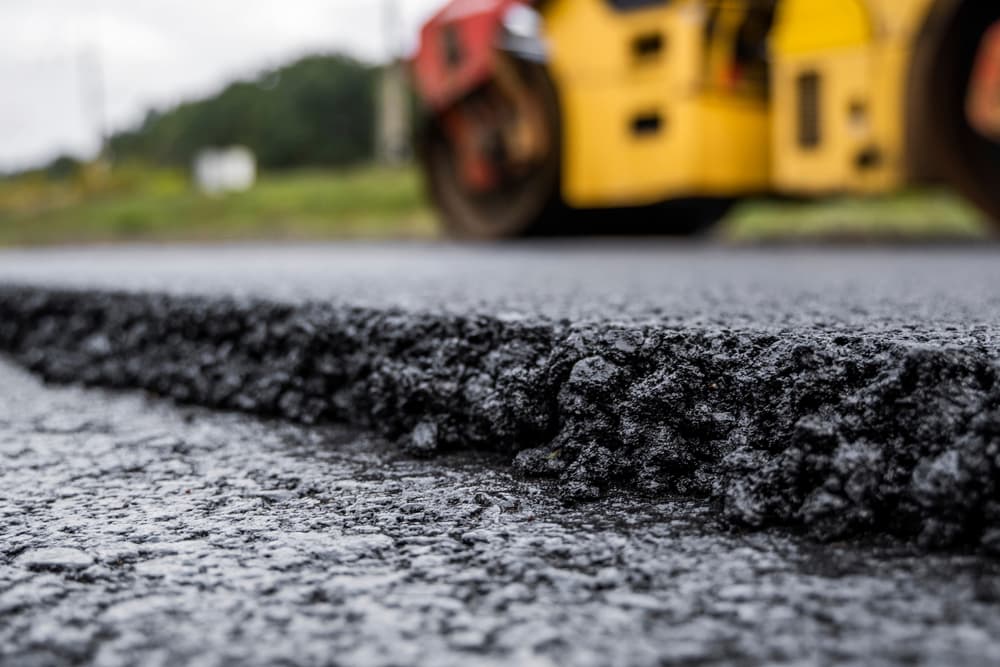Our A1 Professional Asphalt & Sealing Llc Statements
Our A1 Professional Asphalt & Sealing Llc Statements
Blog Article
The smart Trick of A1 Professional Asphalt & Sealing Llc That Nobody is Discussing
Table of ContentsTop Guidelines Of A1 Professional Asphalt & Sealing LlcThe Best Guide To A1 Professional Asphalt & Sealing LlcSome Known Facts About A1 Professional Asphalt & Sealing Llc.Some Known Details About A1 Professional Asphalt & Sealing Llc All About A1 Professional Asphalt & Sealing Llc

The oil in an auto engine is not just oil. It contains a variety of ingredients to enhance the vehicle's efficiency. These include polymers, thickness modifiers, warm stabilizers, additional lubricating substances, and use additives. The REOB has all the ingredients that were in the waste oil as well as the wear steels from the engine (mostly iron and copper).
By making several blends using different REOB samples and various asphalt binders, the variants largely can be averaged out. A number of States gave examples of well-known REOB composition to TFHRC researchers, who assessed the examples to contrast the percentage of added (known) REOB to the found (evaluated) amount. The analyses showed a similar portion of added and discovered REOB.
Some Ideas on A1 Professional Asphalt & Sealing Llc You Need To Know
None of those States realized that the asphalt they were acquiring consisted of REOB. One State insisted its examples had no REOB - https://a1asphaltseal.edublogs.org/2024/04/20/a1-professional-asphalt-sealing-llc-mastering-asphalt-repairs-and-sealcoating/.
Of the 1,532 samples checked, 12 percent consisted of REOB, and some included significantly high degrees of it at 1020 percent. The greatest level was 34 percent in a sample from Texas, which TxDOT had actually utilized in a patching compound. This testing additionally disclosed the presence of phosphoric acid in 11 percent of the examples, and 2 percent included ground tire rubber.
Two years ago at TRB's yearly meeting, the Federal researchers held an REOB workshop and offered the findings of their lab examinations to a standing room-only crowd. Some firms do not particularly prohibit REOB, they do impose physical examinations that preclude its useeffectively a ban. Others do not outlaw it by spec, but have arrangements with asphalt suppliers to stay clear of making use of REOB
8 Simple Techniques For A1 Professional Asphalt & Sealing Llc
Ohio and Texas restriction degrees to much less than 5 percent of the asphalt. To create a reliable test technique that all States can utilize, the TFHRC scientists set up a round-robin examination plan.
The individuals are checking the samples independently making use of the standards supplied by the TFHRC researchers. The result will be a recommended AASHTO examination method that any kind of State can take on and use.
The pavement with REOB, which is situated 0.6 mile (1 kilometer) from the pavement without REOB, has identical subgrade, traffic thickness, and environment. The segment of Highway655 with 5 to 10 percent REOB revealed considerable cracking. In this instance, the presence of REOB was the recognized source of cracking at a low temperature levels.
"In our experience in copyright, also small amounts of 23 percent can be an issue." In a similar way, a section of examination pavement in Minnesota (MN1-4) located to have REOB likewise fractured too soon. The pavement executed well for the first 3 to 4 years, yet then started to break. This sidewalk is additionally subject to low temperature levels.
A1 Professional Asphalt & Sealing Llc Fundamentals Explained
The examinations were not extensive, but they revealed that at degrees of 6 percent or more, the tensile stamina of the asphalt dropped substantially. At a degree of 3.5 percent REOB, the variation in the physical test methods was higher than the impact of REOB. As a matter of fact, it was hard for scientists to evaluate whether REOB existed.

One binder specification taken into consideration is the distinction in between the reduced temperature essential specification temperature level for rigidity (S) in the flexing beam of light rheometer and the bending beam rheometer creep incline (m-value) kept in mind as Tcritical. TC = TC (S) TC (m-value). Examination of this criterion is still ongoing. Two independent Go Here research study teams, one from AASHTO and the other from the Asphalt Institute, concluded that even more research study is needed on the use of REOB in asphalt.
Previously, all asphalt screening determined design buildings such as stiffness. These tests do not show what materials had actually been added to the asphalt. One example obtained during the TFHRC study had a really unusual analysis. The example had the following examination results: Superpave PG 64-28 with a high temperature level grade of 67.3 Tcritical on the flexing beam of light rheometer was 6.7 degrees Celsius.

The 5-Minute Rule for A1 Professional Asphalt & Sealing Llc
These results show there are weaknesses in the standardized design testing methods that may be manipulated. The manufacturer might have an economic advantage and the item passes all the standard examinations, yet the product may not be advantageous to guaranteeing long-lasting performance. To resolve this concern and the development of brand-new asphalt ingredients and extenders, TFHRC is beginning a research program to make use of handheld spectroscopic devices, x-ray fluorescence spectroscopy, and Fourier change infrared spectroscopy to make it possible for evaluations to be performed in the field as opposed to having to take samples back to the laboratory.
Report this page